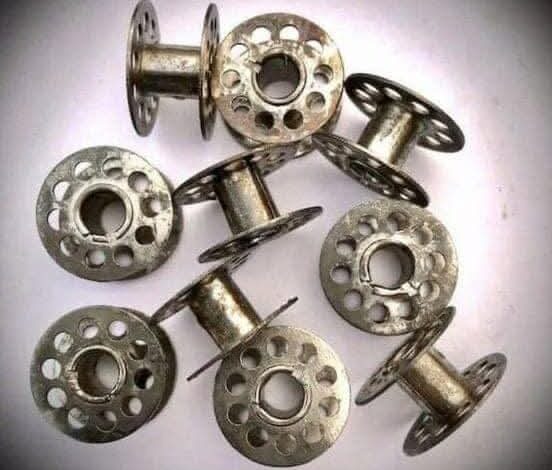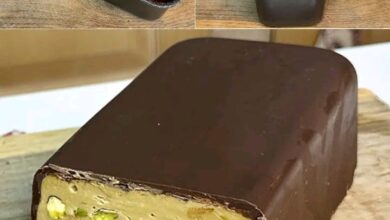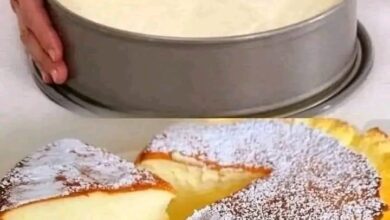🧶 Origin and Cultural Significance

Absolutely! Let’s craft a creative, nostalgic, and informative content piece around the phrase:
> “It’s 1970. I found these in my Granny’s sewing can but I don’t know what they are? Check the comments 👇”
We’ll treat this as a vintage discovery moment — perhaps involving old-fashioned sewing notions, buttons, or mysterious tools — and give it the full breakdown: origin, cultural context, what they are, and why they matter.
—
🧵 Introduction
“It’s 1970. I found these in my Granny’s sewing can…”
There’s something deeply special about digging through a vintage sewing kit — like stepping into a time capsule of domestic history. Among buttons, thimbles, and thread, you may find curious little tools or gadgets that seem puzzling today but were once everyday essentials in the sewing world.
Today, we’re uncovering mystery items from Granny’s sewing tin, likely dating back to the mid-20th century — and giving them the attention they deserve.
—
In the 1970s (and long before), sewing was a domestic art, passed down through generations. Before fast fashion and Amazon Prime, if you wanted a dress hemmed, a sock darned, or a zipper replaced, you did it yourself — or your Granny did.
Sewing cans (often cookie tins or biscuit boxes) were treasure chests: filled with vintage tools, thread cards, fabric scraps, bobbins, pins, and curious contraptions with unique purposes. Many of these tools were made of metal, Bakelite, wood, or bone — durable, often handmade or built to last.
—
📦 Ingredients / Quantity (What You Might Find in the Tin)
Here are some classic items commonly found in a vintage sewing tin:
Thimbles – metal or ceramic, worn to push needles through tough fabric
Needle threaders – tiny metal discs with wire loops (often with a lady’s head stamped on!)
Wooden darning eggs or mushrooms – used to mend socks
Hook-and-eye fasteners
Snap buttons
Vintage safety pins or straight pins (often glass-head)
Tailor’s chalk or wax wheels
Bodkins – tools to thread elastic or ribbon through casing
Measuring tapes – sometimes made of cloth or fabric
Sewing machine oil bottles
Bias tape or rickrack – decorative trim
And perhaps even mystery items like:
Needle cases that look like lipstick tubes
Buttonhole cutters
Lingerie strap holders
Stiletto tools (not the shoes — tools to hold or guide fabric under the needle!)
—
➕ Optional Additions (What Else Might Be Hidden?)
Handmade pin cushions – often stuffed with sawdust or wool
Vintage pattern weights – metal discs or handmade weights
Old Singer machine parts
Embroidery floss wrapped around cardboard
Unfinished projects tucked away decades ago
Some tins even contained non-sewing items, like:
Coins
Hairpins
Tiny scissors
Vintage costume jewelry bits
Coupons from the 60s/70s!
—
💡 Tips for Success (Identifying Mystery Sewing Tools)
1. Photograph the item from multiple angles.
2. Look for brand stamps — Singer, Dritz, or Coats & Clark are common.
3. Compare with vintage sewing catalogs or websites like Etsy, eBay, or Reddit’s r/whatisthisthing.
4. Ask older family members — they often know right away!
5. Be cautious of sharp items or rust if the tin hasn’t been opened in years.
—
🧵 Instructions (How to Use Common Vintage Tools)
Example: Needle Threader
1. Insert the thin wire loop through the eye of the needle.
2. Push the thread through the loop.
3. Pull the loop back out of the needle — the thread follows through.
Example: Darning Egg
1. Insert the egg into a sock or sleeve.
2. Stretch the fabric smoothly.
3. Stitch across the worn area in overlapping rows.
Example: Bodkin
1. Attach ribbon or elastic to the bodkin.
2. Guide it through a fabric casing or waistband.
—
✨ Description
Each item in your Granny’s sewing can tells a story — of clothes repaired, quilts mended, and Sunday dresses handmade with care. The tools may be small, but their legacy is huge: creativity, resourcefulness, and love stitched into every seam.
To hold a piece from 1970 is to hold history — often beautifully designed, surprisingly functional, and still usable today.
—
🔍 Nutritional Information
🧵 Not edible — but nourishing in a different way:
Fiber? Yes — in the form of vintage threads.
Satisfaction? Immeasurable.
Side Effects? Sudden urge to start a sewing project or call your grandma.
—
🧵 Conclusion
That mystery item in Granny’s sewing can? It’s more than just a forgotten tool — it’s a thread in the fabric of family, memory, and tradition. Whether it’s a rare sewing gadget or a well-worn thimble, it holds sentimental and historical value worth honoring.
—
❤️ Recommendation
Don’t toss that tin!
Document each item (photos + notes)
Use some of the tools in your own mending or crafting
Pass them on or frame them in a shadow box
Or start a new sewing tin — a modern heirloom for the next generation
—
💚 Embracing Healthful Indulgence
Rediscovering slow, hands-on activities like sewing is good for the soul. It teaches patience, mindfulness, and creativity. You’re not just identifying old tools — you’re connecting to a simpler, more intentional way of life.
Use this moment to:
Mend a piece of clothing
Learn a stitch
Start a DIY upcycling project
Or just appreciate the craftsmanship of the past
—
💬 It’s 1970. I found these in my Granny’s sewing can but I don’t know what they are…
👀 Check the comments to uncover the mystery! 🧵👇
Want help identifying a specific object? Upload a photo — I’ll help you figure it out!



